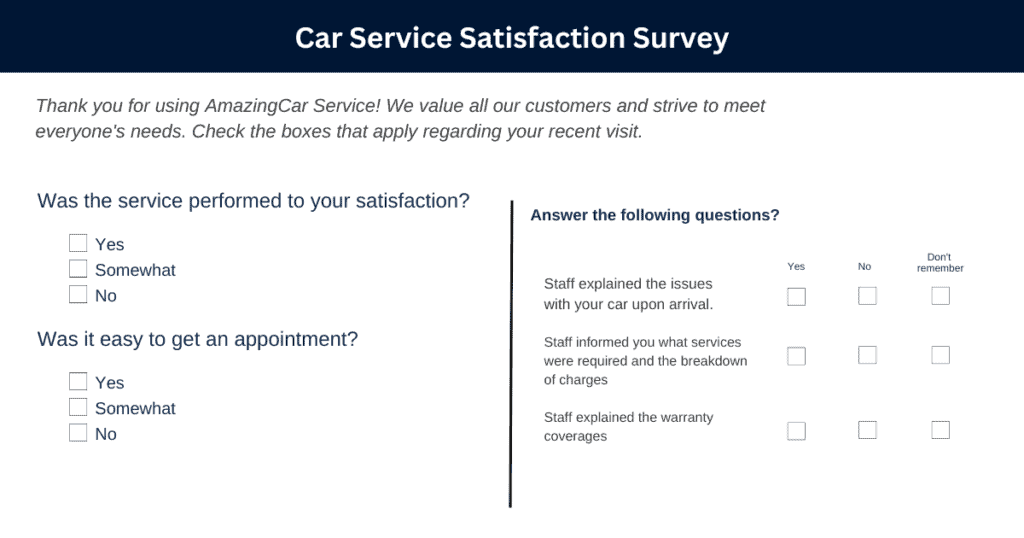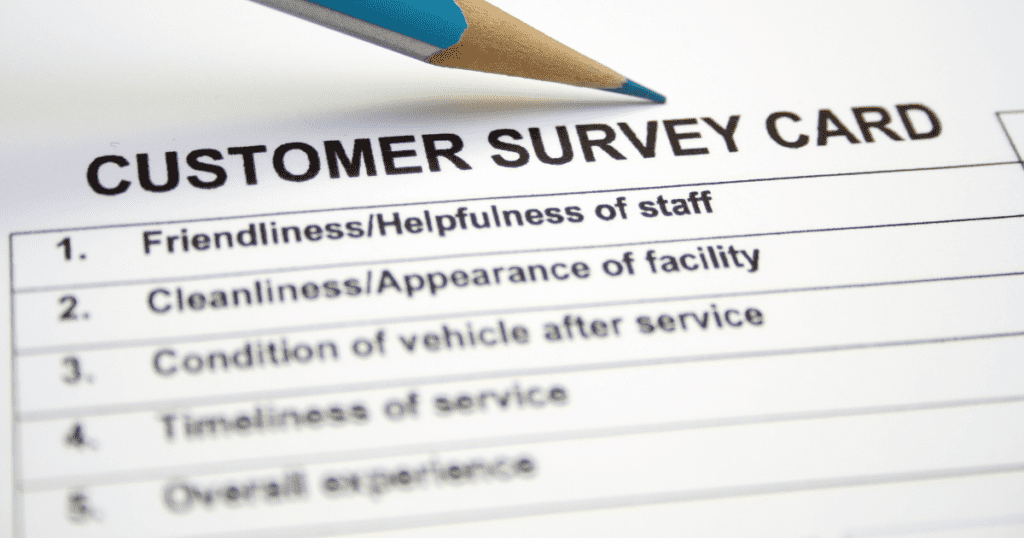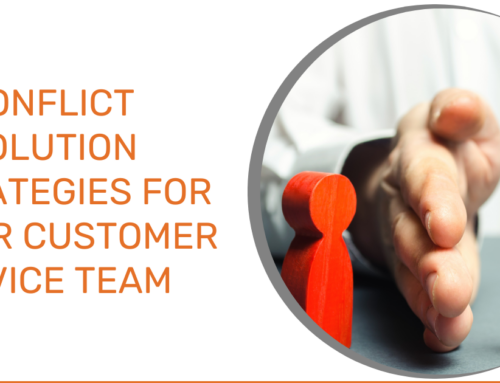Creating a customer feedback loop means being intentional about collecting and responding to customer feedback. So far in our series, we have covered how customer feedback benefits your business and the various direct and indirect ways to collect customer feedback. One of the primary direct methods is to create a survey. Today we will focus on this topic by sharing tips for designing an effective customer satisfaction survey.
Everyone has taken surveys, so we all think we’re experts on the subject. However, there are many things to consider as you design a customer survey, and you’ll want to be strategic in every detail. We’ll be covering survey questions in our next article. Today, we’ll discuss the higher-level planning and execution of your customer satisfaction survey.
10 Tips for Creating a Customer Satisfaction Survey
From choosing a goal for your survey to how you share it with customers, this list of tips covers the essential elements of customer surveys.
1. Set Your Goal

Without setting a goal for your survey, you might end up with a random jumble of questions that don’t give you the information you need. Some possible goals for your customer survey are:
- To benchmark customer experience metrics
- To understand the customer journey
- To get feedback on your product/service
- To improve the sales or support experience
- To determine customer satisfaction
- To test reaction to changes you’ve made in the business
2. Get the Timing Right
With your goal in mind, you’ll also want to consider the best time to send the customer satisfaction survey. The key to getting the most helpful feedback is to send it at the right moment in the customer journey. If you haven’t done so, check out our article on using customer experience mapping. Although we wrote it with pizza businesses in mind, the article will help you map out the stages of the customer journey in your auto dealership or repair shop and the important touchpoints along the way. Your customer experience map will help you identify the perfect time to send your customer survey.
3. Choose the Right Survey Questions

We’ll dive deep into survey questions in our next article. For now, we want to mention briefly that you’ll need to be selective with the questions added to your survey.
- Focus on questions that directly relate to your goal in #1.
- Save unrelated questions – you could use them in a different survey.
- Narrow it down to a few questions that will provide the information you want (we’ll discuss length in tip #5).
- Consider the various ways you may ask the same question to select the most appropriate format.
4. Perfect Your Technique
After selecting the right survey questions to get the feedback you want, you’ll have to carefully look at each one to ensure you word it clearly. Here are some common mistakes that people make when asking customer survey questions.
- Leading Questions: If a question is phrased to direct customers to a particular answer, you won’t get genuine feedback.
- Vague Questions: Your language should be specific so customers don’t have to guess what you mean.
- Two Questions in One: Ask one question at a time to isolate feedback on separate elements. For example, “Was the customer service representative helpful and friendly?” could produce muddled results.
- Hard-to-Understand Questions: Keep sentences short and avoid using jargon that others may not understand.
- Too Many Required Questions: While essential questions in your survey should be ‘required,’ setting others to ‘optional’ can lower the time commitment and thus increase the number of people who agree to take your survey.
- Questions That Are Too Personal: Avoid asking questions that may be perceived as invading privacy or security.
5. Keep It Short

There is probably a lot you’d like to know about the customer experience, but the secret to a good customer survey is to keep it short. Aim for 10 or fewer questions in a survey that respondents can complete in less than 5 minutes. When you test your survey (see tip #7), evaluate the time it takes to complete, and also ask your testers how they felt about how long the survey was. If you have extra questions that you’d like answers to, consider adding a final question at the end to see if the respondent would be willing to share more feedback in a second survey or phone/video/in-person interview.
6. Choose a Survey Platform
Now that you’ve narrowed down your questions and analyzed your technique, it’s time to choose a survey platform to set up your survey. Many options are available so you can choose one based on your technical skill, budget, and other preferences. For options, check out this review from TechRadar, which shares a list of the best survey tools of 2022.
7. Test Your Customer Survey

Before you go live with your customer satisfaction survey, you’ll want to test it to ensure it is ready. Try to find testers who resemble your target customers, are outside your business, and are willing to give you their honest feedback. Here are some things to pay attention to during your test.
- Were there any technical problems with the survey software?
- Were there any typos or errors in the text?
- Were any of the questions confusing or hard to understand?
- What do they think about the number of questions/the time it took to complete the survey?
- Do they have any other feedback about your customer survey?
You can adjust and improve the survey as needed based on the feedback you get.
8. Decide on Distribution
When your survey has passed the final test, it’s time to distribute it to customers…but how? The answer depends on your customers and the data you have collected from them. Some of the best survey distribution methods are digital: sending an email or sending the survey link via a text message with your VoIP phone service. Other options include posting the survey on social media, conducting phone surveys, or inviting customers to an interview.
9. To Incentivize or Not?

Another consideration when setting up a customer satisfaction survey is whether you should incentivize the survey or not. For example, you may offer those who take your survey a reward, such as a discount on future services, a gift card, or an entry to win cash. Survey incentives can be used to build goodwill and boost the response rate. On the other hand, they can decrease the value of your data by introducing survey bias and attracting people who are just looking for a reward. You must weigh the pros and cons (and test your options) to see if incentivizing is a good idea.
10. Gather Results
In future articles, we will discuss analyzing and acting on the feedback you get from customer surveys. For now – as we discuss customer satisfaction survey design – we will mention that you’ll want to gather your survey results into one location to facilitate your efforts down the road. The survey platform you choose will have options for storing and viewing your survey data, so take some time to get familiar with the program.
Need Help with Questions for Customer Surveys?
The 10 tips above outline the essential elements of designing a customer satisfaction survey. It takes time to create one but having a standardized means of gathering customer feedback will be a huge advantage in your automotive business. By measuring customer satisfaction and acting on the responses you get, you’ll better understand your customers and how you can please them at every step of their journey.
Of course, this article presented a high-level view of creating a customer survey. If you want more help with the details, stay tuned for our next article. In it, we’ll explore the types of questions you may consider in your survey and specific questions you can ask. See you next time!



